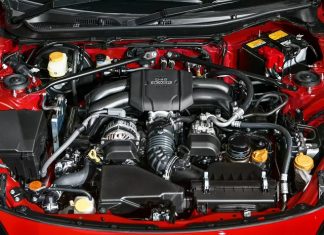
In a country that’s been captivated by full-sized, full-luxury 4x4s for more than 2 decades, Nissan’s outback-sized Patrol is a giant among giants. With their 3 meter wheelbase, and weighing more than 3000kg, Patrols are anything but lightweights, which is why they need powerplants that are capable of producing prodigious amounts of power at all times.
In its most potent Y62 trim, the Patrol’s 5.6L, VK56 V8 cranks out a solid 319kW; and with its electronic Variable Valve Event and Lift (VVEL) timing technology, is certainly capable of grinding out much more. Not that the rated output isn’t respectable, but when you consider the Patrol’s own girth, it doesn’t feel all that impressive when you’re hauling a 3500kg trailer with the aircon running. What you need is a cost-effective, non-intrusive way to tap into the VK56’s prodigious power potential, and that’s precisely what an exhaust upgrade does.
Nissan’s Built-in Benefits for Patrol Exhaust Upgrades

Let’s be honest: when it comes to increasing engine output, aftermarket exhaust tuning has been the go-to choice for auto owners for a long time. It takes a timing system like VVEL, however, to really reap the benefits of what aftermarket Nissan Patrol exhausts have to offer. Engines need to get rid of spent exhaust gases more efficiently in order to breathe better, and a properly tuned stainless steel or aluminized exhaust system offers everything it takes to give the Patrol’s heavy-breathing V8 an advantage when it exhales.
Whenever exhaust upgrades come up in discussion, what’s normally overlooked is the fact that while almost any upgrade can help with evacuating spent gases, none of them actually produce more power. Power production is purely a matter of engine output; and in the case of the Patrol, the VK56’s improved breathing and exhaling behind its VVEL intake timing technology allows it to get verifiable benefits from an upgraded Patrol exhaust system, including:
- Greater acceleration for pulling off;
- Improved throttle response for passing, merging, or towing; and,
- Increased bottom-end torque for uphill climbs or off-road driving.
And make no mistake: VK56-powered 6th generation Y62s aren’t the only Patrols that are equipped with the electronic intake and exhaust valve technology needed to get the most from what an aftermarket Patrol exhaust system has to offer. 4th generation GQs, and 5th generation GUs, both in petrol and diesel configurations, are all outfitted with Nissan variable valve timing technologies. That means all of the most popular late-model Patrols that are on the road are also among the most uniquely receptive aftermarket exhaust system recipients that you’ll find anywhere.
Aftermarket Patrol Exhausts Move Spent Gases Better
To fully understand how variable valve timed Nissans are able to benefit from aftermarket Patrol exhaust systems, it’s important to understand the precise nature of all exhaust systems. Their main objective is to vigorously move spent gases away from the engine, and that’s where the engineering behind a high-flowing Nissan Patrol exhaust upgrade really comes into its own.
A premium quality Patrol exhaust upgrade is designed to:
- Effectively draw (scavenge) as much heat and spent gas away from the engine as possible;
- Eliminate any points of turbulence or backpressure that the engine would have to work harder to overcome; and,
- Maximize exhaust gas velocity throughout the entire length of the exhaust system.
Ideally, the more capable an exhaust system is of drawing spent gases through the tubing, the easier it is for fresh air/fuel mixtures to be introduced into the engine. Nissan’s valve timing technology excels at optimizing the combustion mixture, and high-performance Nissan Patrol exhaust systems allow it to do it.
Premium Patrol Exhaust System Attributes

Regardless of whether you’re looking for 2.5″ tubing for a 4.2L twin-turbo diesel GQ, or 3.0″ tubing for your petrol-powered 5.6L Y62, all Nissan Patrol performance exhaust systems conform to 3 basic “cat-back”, extractor-back, or full-length configurations, and are based on:
- 2.5″ single-in / 3.0″ cat-back dual-out assemblies for inline 6-cylinder engines;
- 3.0” low restriction centre muffler assemblies for V8 engines; and,
- 3.0” low restriction rear muffler/tailpipe assemblies for V8 engines.
Although the configurations can vary, they all boast the same core of high-quality materials and characteristics, consisting of:
- Solid construction. Fully TIG-welded joints and seams help prevent the kind of unwanted tube fatigue that can result in stressful flexing and bending, leading to flow-disrupting cracks.
- Corrosion-resistant materials. Starting with 2.5mm stainless, or aluminized steel tubing, top-quality Nissan Patrol exhaust systems won’t rust or oxidize as a consequence of moisture, heat cycling, or exhaust gas exposure.
- High flow engineering. Precision mandrel bent curves and flush-mounted flanges are crucial for increased scavenging, while also reducing internal tube turbulence and exhaust gas eddying.
Heat treating is another premium attribute that upgraded Patrol exhaust systems can count on. It’s an essential process that not only increases the system’s strength but also makes it easier to weld or repair if necessary.
The Final Word
At the end of the day, Nissan’s Patrol is more than just another full-sized 4×4. It’s an 8-seater behemoth that’s built to carry just about any size load you can hook it up to. That doesn’t mean it couldn’t benefit from some extra output though, which, fortunately, is just a bolt-in away.
Aftermarket Nissan Patrol exhausts are the perfect power-producing complement for their performance-minded variable valve technology. It’s just what you need to solidify the Patrol’s position as the budget-minded, ever-ready hauler/tow vehicle that it was born to be.















